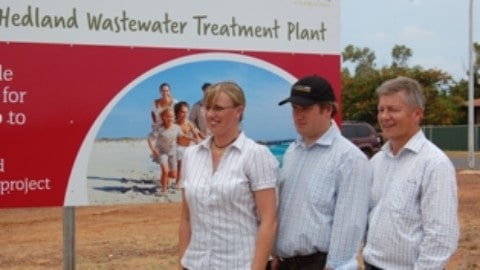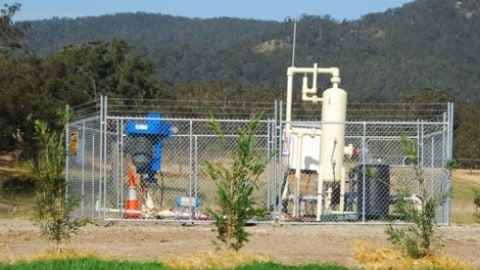SA Water’s Port Lincoln Wastewater Treatment Plant has commenced works as part of a $400,000 investment to enhance sewage treatment and overall performance.
Floating aerators in one of the plant’s treatment basins and seals located along the basin will be rehabilitated, improving the efficiency of the biological process that breaks down nutrients in sewage.
SA Water’s General Manager of Operations, Chris Young, said the floating aerators distribute a constant supply of oxygen to help microorganisms remove the nutrients, which is an important step in recycling sewage.
“As we look to tackle the changing climate, our treatment plants have transformed into rich resource recovery centres that are now capable of creating sustainable sources of recycled water,” Mr Young said.
“When Port Lincoln’s used water and sewage come into the local plant, they undergo a series of processes to treat the sewage and separate the solid organic material from water.
“The floating aerators – which are operated by an electric motor and have propellers – are located near the centre of the basin and push oxygen into the sewage that’s held inside the structure.
“Oxygen gives the naturally-occurring bugs in sewage the extra push they need to break down the organic material and remove all the nutrients before the water flows to another tank for additional treatment.
“The process is a living, breathing beast and we need to keep it performing at an optimal level to maximise our recycled water supply. Replacing the aerators every five years ensures we’re looking after our busy bugs.
“Once the water has been recycled, it’s used by the local council as a sustainable source of alternative water to irrigate ovals and parks across the town, helping keep these spaces green.
“While the basin is empty, we’ll also give it a thorough clean and inspect other equipment that’s usually not visible, with the project expected to take around eight weeks to complete.”
SA Water’s Port Lincoln Wastewater Treatment Plant was built in 1994 and currently supplies around 100 million litres of recycled water each year.
Mr Young said there won’t be any impact to local customers’ sewer services during the works and measures are already in place to manage any temporary increases in sewer odour from the plant.
“We expect this to be a low likelihood, but do however encourage the community to be our ‘sleuths’ and get in touch if they notice any change,” Mr Young said.


















